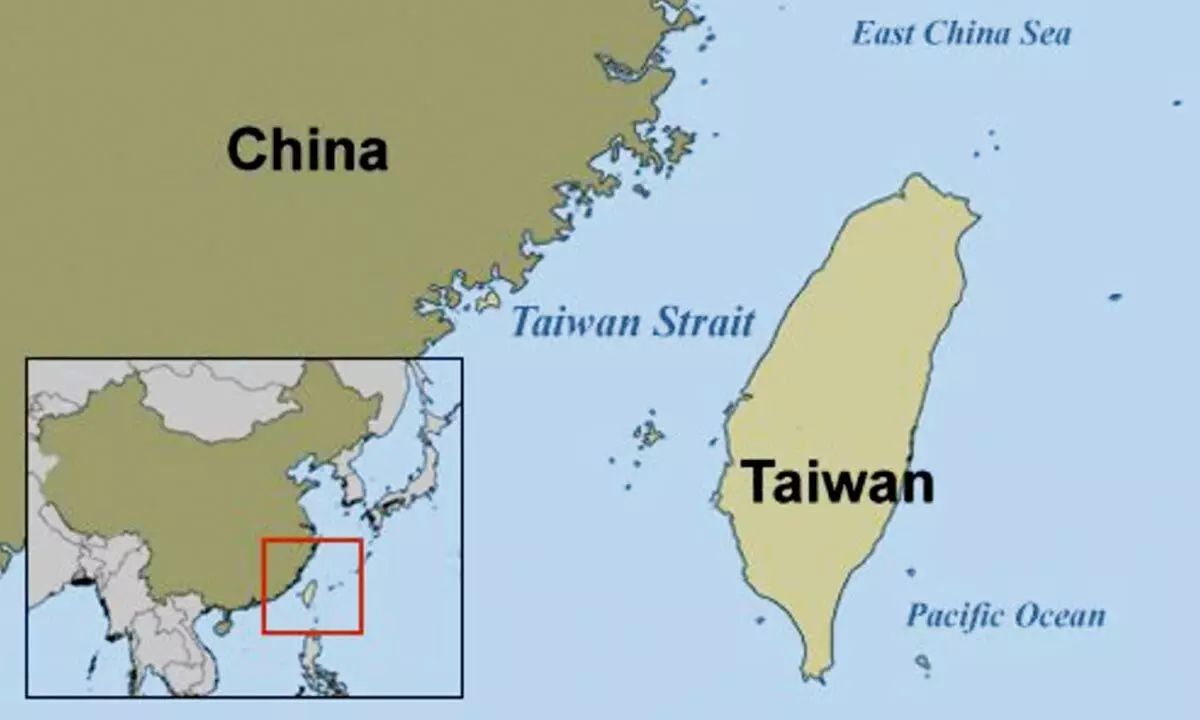Chinese invasion of Taiwan could boomerang and disrupt world economy
It could create turmoil in global markets like those caused by Covid-19 and Ukraine war
image for illustrative purpose

A war between a small country and a big power today is not only expensive but will also not be a cakewalk for the bigger side, as Russian President Vladimir Putin is finding out, much to his dismay. With the war in Ukraine soon to complete one year of fighting, what is notable is that Ukraine has been able to sustain itself despite having a much smaller GDP and a weaker military than Russia
The Taiwan Strait is one of the world’s most dangerous flashpoints, and it will remain so into the foreseeable future. Beijing’s aggression toward Taiwan started decades ago, but the scale and intensity of its military provocations have skyrocketed in recent years. Incursions by Chinese aircraft into Taiwan’s air defense identification zone (ADIZ) have increased exponentially, and Beijing’s disproportionately large exercises following US Speaker of the House Nancy Pelosi’s August 2022 visit to Taipei have fueled fears of a dangerous “new normal” in the region.
A Chinese invasion of Taiwan would also cause significant supply chain disruptions and turmoil in global markets like the ones brought about by the Covid-19 pandemic and Russia's invasion of Ukraine.
The Taiwan Strait is a major route for ships transporting goods from east Asia to the United States and Europe. Taiwan has also emerged as a key battlefront in the chip industry supply chain. However, China will not attempt to invade Taiwan before the end of the decade because it understands the high cost. The United States can likely deter Beijing from attacking the self-governing island 100 miles off the Chinese coast, said an expert on the issue.
In the past one year, Washington, its allies and partners have built-up capabilities to “ensure that kind of coercion and bullying” – from threats of attack to interfering with transiting aircraft and shipping – don’t succeed.
Japan’s decision to ramp up defence spending and work on counter-strike weapons, the agreement between the U.S. and the Philippines on establishing four new sites in the island republic for U.S. forces and the progress on the technology sharing agreement between Australia, the United Kingdom and the U.S.
The “new technology dialogue” with India will lead to more co-development and co-production activities “that makes our defence industrial bases more compatible.”
China’s approach to Taiwan this year will broadly be a continuation of the confrontational stance it has employed since 2016, but it will be careful not to let tensions go out of hand. Beijing remains committed to a long-term process of “peaceful reunification,” and views its pressure as important for preserving the CCP’s claim over Taiwan—and its own regime legitimacy—while avoiding a military conflict it is not yet prepared to fight.
First, a war between even a small country and a big power today is not only expensive but will also not be a cakewalk for the bigger side, as Russian President Vladimir Putin is finding out, much to his dismay. With the war in Ukraine soon to complete one year of fighting, what is notable is that Ukraine has been able to sustain itself despite having a much smaller GDP and a weaker military than Russia. Second, with China’s export markets drying up in Europe and the United States, the Chinese real estate crisis deepening further, the World Bank and the IMF predicting a gloomy economic growth outlook of 1.7 per cent and 2.7 per cent respectively, the key priority for the Chinese leadership is not to use force in the Taiwan Strait but to strengthen the economy. China’s economy is struggling in the midst of a pressure campaign waged against it by the United States. At the same time, the Chinese economy is also slowing down sharply under mounting pressure post-Covid, especially following the CCP regime’s reversal of the zero-Covid policy. Under such circumstances, it would be foolhardy on the part of Xi, or the CCP, to burden the national economy with an enormous war bill.
Taiwan and Ukraine cannot be compared in military strength – Taiwan is armed to the teeth. Unlike Ukraine’s steppe-like fertile plains and plateaus, Taiwan consists of over 100 islands with the outer ones dotted with missiles, rockets and artillery guns. In addition, Taiwan’s granite hills are home to tunnels and bunker systems.
While officially Washington maintains “strategic ambiguity” on whether it would defend Taiwan militarily if needed, none other than President Joe Biden himself has repeatedly answered directly in the affirmative. Amid the China-U.S. competition it seems more and more likely that Washington cannot afford to allow Beijing a free hand in any military campaign against Taiwan.
The current Japanese government has followed up on signals from the late prime minister Abe that Tokyo would help to defend Taiwan.
Abe had once said, “A Taiwan contingency is a contingency for Japan.”
The Kishida government’s push for a more muscular defence role in the region is believed to be in part motivated by the potential for a Taiwan contingency.

